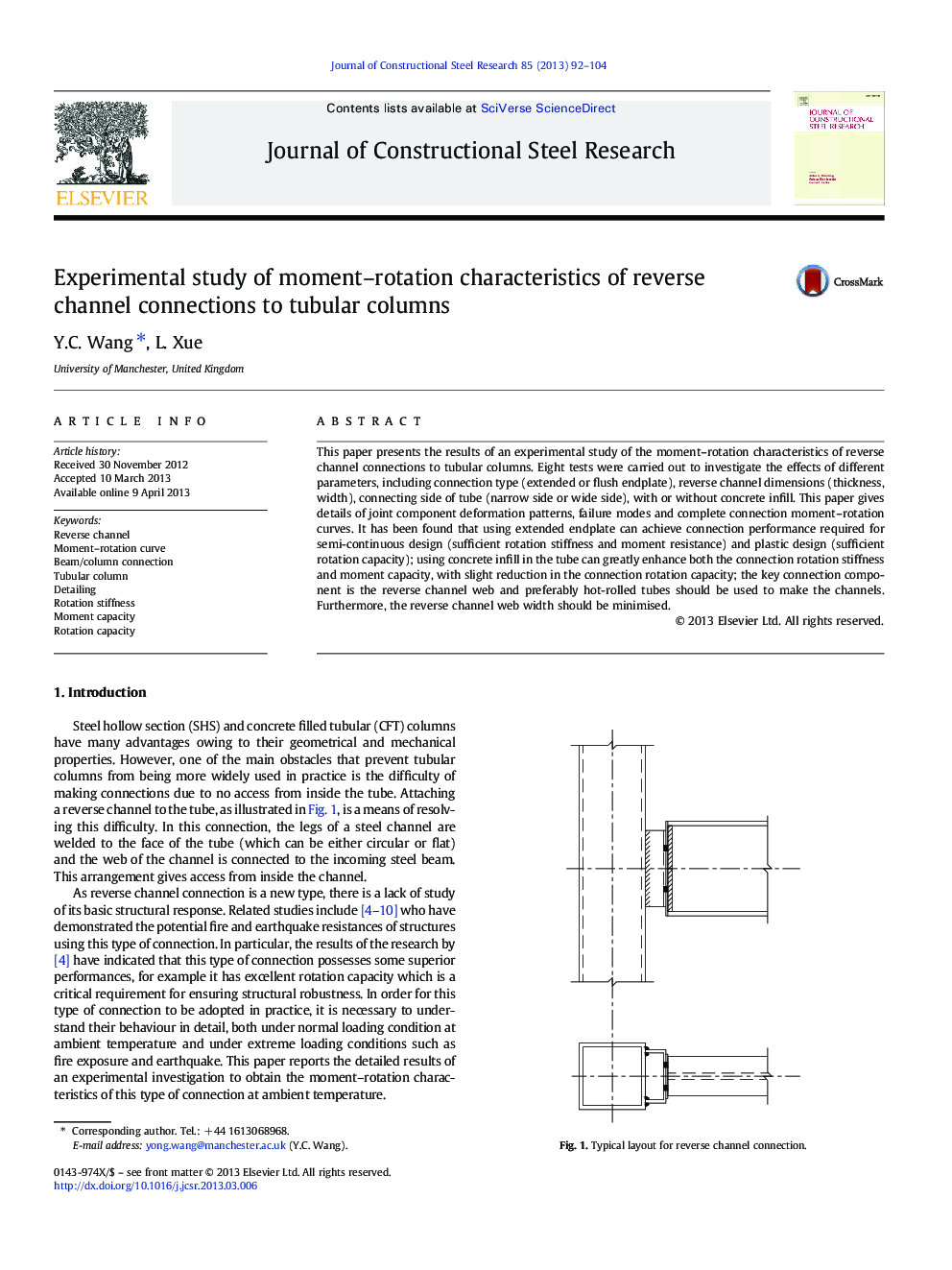| Article ID | Journal | Published Year | Pages | File Type |
|---|---|---|---|---|
| 284988 | Journal of Constructional Steel Research | 2013 | 13 Pages |
•Introducing a new joining (reverse channel) methodology to tubular columns.•First ever test results of moment-rotation behaviour of reverse channel joints.•Advice on how to selection joint detailing to achieve semi-continuous design.
This paper presents the results of an experimental study of the moment–rotation characteristics of reverse channel connections to tubular columns. Eight tests were carried out to investigate the effects of different parameters, including connection type (extended or flush endplate), reverse channel dimensions (thickness, width), connecting side of tube (narrow side or wide side), with or without concrete infill. This paper gives details of joint component deformation patterns, failure modes and complete connection moment–rotation curves. It has been found that using extended endplate can achieve connection performance required for semi-continuous design (sufficient rotation stiffness and moment resistance) and plastic design (sufficient rotation capacity); using concrete infill in the tube can greatly enhance both the connection rotation stiffness and moment capacity, with slight reduction in the connection rotation capacity; the key connection component is the reverse channel web and preferably hot-rolled tubes should be used to make the channels. Furthermore, the reverse channel web width should be minimised.
